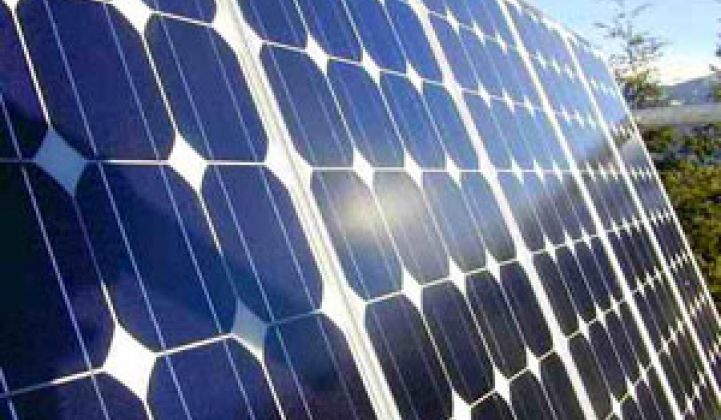1366 Technologies said Thursday it will get up to $3 million from the U.S. Department of Energy to produce crystalline silicon cells that promises to work harder at cranking out electricity.
The Lexington, Mass.-based startup, which signed the contract with the DOE this week, is getting the money from the Solar American Initiative, a program to invest in technologies that could make the cost of producing solar energy on par with power from coal- or gas-fired power plants by 2015.
1366 Technologies aims to reduce the manufacturing costs by raising the solar cells’ power output and using different materials. And it has to figure out ways to make them on a commercial scale. If all goes as planned, then 1366 Technologies can offer ways to cut production costs by 25 percent, said CEO Frank van Mierlo.
The company, founded in 2007, has been able to produce roughly 10 cells per day in its pilot production line. The goal is to make 1,000 of them per day, van Mierlo said.
The company’s technology grew out of research conducted by Emanuel Sachs at the Massachusetts Institute of Technology. The startup has set out to improve the multicrystalline silicon cells’ efficiency, which refers to how well they can turn sunlight into electricity. Multicrystalline silicon cells aren’t as good at converting sunlight to power as monocrystalline silicon cells, but they are cheaper to make. That trade off has seen a growth in multicrystalline silicon cell and panel producers worldwide.
Multicrystalline cells have a typical efficiency of 15.5 percent, and 1366 Technologies wants to increase that to 19 percent without increasing the manufacturing costs, van Mierlo said.
The company’s researchers have figured out two ways to increase cell efficiency. One is to i mprove the conductivity of the cells. Currently, solar cells are printed with lines made with a mix of silver and other materials for conducting and transporting the electrical current. The mixture contains materials that significantly hamper the silver’s conductivity, and the lines are thicker than they could be, van Mierlo said.
What 1366 Technologies has done is shrink the lines’ width to 30 microns from 100 microns to 150 microns, thereby exposing more of a solar cell’s surface to the sun. The company also wants to copper instead of silver. Copper doesn’t conduct electrical current as well as silver, but it’s cheaper. Making these changes would improve a cell’s ability to absorb the blue light and improve its power-generation capability, van Mierlo said.
The second improvement 1366 Technologies’ researchers have made is to change the texture of the solar cell so that it can trap and absorb more of the infrared light.
“Imagine the cell that is completely flat, and infrared light comes in and reaches in and bounces and comes back out. Now imagine you have ridges and valleys on the front of the cell, and when the infrared light hits the silicon surface and all the ridges before it get out,” van Mierlo said.
To show that it’s possible to mass-produce this kind of solar cell, 1366 Technologies is designing some of the manufacturing equipment itself. The company intends to make money from selling solar cells and the wafers used to make the cells, as well as licensing its manufacturing technologies.
1366 Technologies will have 18 months to hit its goals as part of the DOE deal. The government funding alone won’t be enough, but 1366 Technologies has enough money to carry out the project, van Mierlo said. The company has raised roughly $12.5 million in private equity so far.
The startup is one of many working on making solar cells cheaper. That will pit it against a number of existing solar factory equipment makers such as GT Solar. Optomec, based in Albuquerque, N.M., only recently introduced a new piece equipment to shrink those light-conducting lines on solar cells (see Optomec Boosts Solar Cell Efficiency With Fine-Line Printing).



